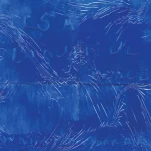Closed Curtain (2013 TIFF review)

In 2010, Iran angered the international film community by imprisoning acclaimed director Jafar Panahi. Accused of promoting propaganda critical of the country, he was sentenced to house arrest for six years and barred from filmmaking for 20 years. That sentence didn’t stop Panahi, however, who in 2011 made the covert documentary This Is Not a Film about his house arrest. His follow-up film continues in the same vein; it’s an unconventional narrative that liberally works in metaphors and symbols. Like Inland Empire or Synecdoche, New York, Closed Curtain examines the very nature of storytelling in a twisting, postmodern way. But even more than those films, Panahi’s movie is deeply pessimistic about art’s ability to repair the problems that real life presents.
Directed by Panahi and co-star Kambozia Partovi (from a script by Panahi), Closed Curtain announces its autobiographical nature rather early on. An unnamed screenwriter (Partovi) is ensconced in his villa while struggling with a new story. The country has recently outlawed dogs in public, so the writer must keep his beloved pooch indoors with him at all times. In a sense, they’re both in hiding from the outside world.
-

-

-

-

-

-

-

-

-

-

-

-

-

-

-

-

-

-

-

-

-

-

-

-

-

-

-

-

-

-

-

-

-

-

-

-

-

-

-

-








































